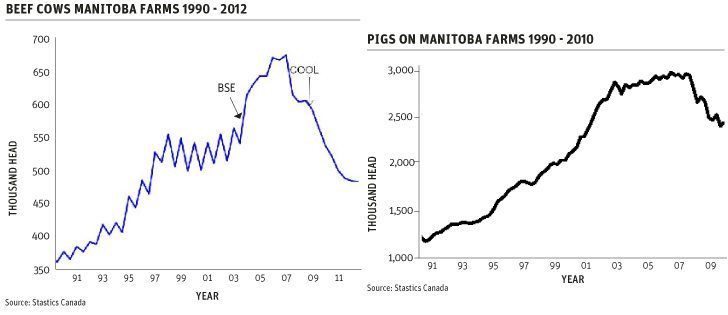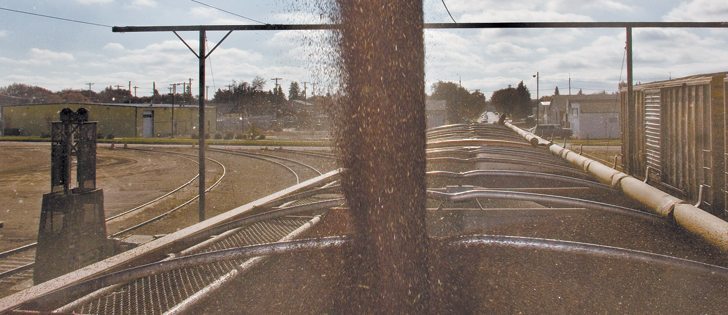Loonie gains value | Strong buck cuts industry profits
Manitoba’s beef cow and pig herds have risen and fallen with the value of the Canadian dollar.
The two industries have shown a remarkable similarity in the shape of their expansion and contraction, regardless of different market cycles, disease crises and border issues since the 1980s.
Manitoba Agriculture livestock industry analyst Marni Donetz said the similar rise from the late 1980s and then sharp contraction from 2007 shows the profound impact of the Canadian-U.S. dollar exchange rate on livestock production profitability.
“I believe the main factor in the run-up (and subsequent decline) was the change in the exchange rate,” said Donetz.
Read Also

Huge Black Sea flax crop to provide stiff competition
Russia and Kazakhstan harvested huge flax crops and will be providing stiff competition in China and the EU.
“We went from a very advantageous situation, then to par.”
The exchange rate story has often been told within the larger livestock market narrative, but Donetz’s charts of beef cow and pig numbers on Manitoba farms threw the im-pact of that one factor into stark relief.
Recent decades have seen strikingly different issues and crises hit the two industries, she told the Fields on Wheels conference Nov. 9. Both have faced U.S. trade actions at different times.
Beef cattle producers were hit especially hard by BSE in 2003, while hog producers saw a sudden market and profitability slump in 2009 when H1N1 struck.
The two industries also follow radically different production and market cycles. Hog production and prices tend to follow a three and a half to four year cycle, while beef cattle have a seven to nine year cycle.
The difference in the cycle lengths is primarily because of gestation times and number of offspring which determine the amount of time the two types of livestock require to expand production in response to profitable prices.
Cattle take much longer than hogs.
However, both beef cow and pig production have expanded and contracted at roughly the same times. Each rose for many years until a peak in 2007 and then fell sharply for a multi-year period.
The timing of the break from expansion to contraction might have been triggered by the spike in feedgrain prices, which occurred in 2007-08.
However, the biggest challenge to long-term livestock profitability was the reversal of the steady weakness of the Canadian dollar versus the U.S. dollar.
The currency weakness of the 1990s ended in 2002 and the currency went from the low 60 cents US to about 90 cents by 2006 and reached par in 2007.
Donetz said the beef cow and pig herds showed signs of stabilizing until this summer’s feedgrain price spike, which has caused more woe to livestock producers.
However, she remains optimistic about the outlook for livestock production in Manitoba, especially with beef cattle.
“I think there is so much opportunity because it is an industry that is flexible and can use resources that no one else wants.”


















